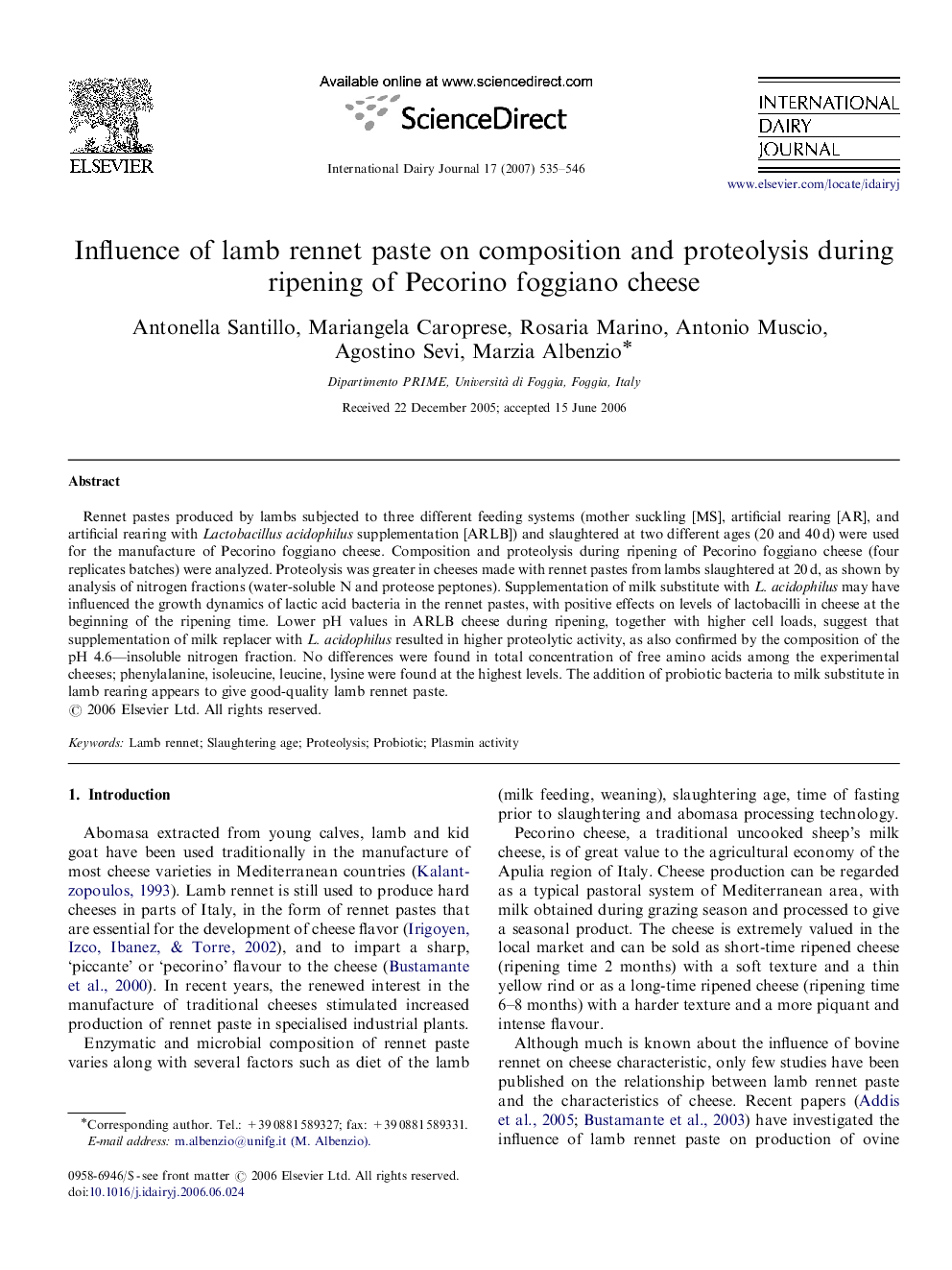| Article ID | Journal | Published Year | Pages | File Type |
|---|---|---|---|---|
| 2435477 | International Dairy Journal | 2007 | 12 Pages |
Rennet pastes produced by lambs subjected to three different feeding systems (mother suckling [MS], artificial rearing [AR], and artificial rearing with Lactobacillus acidophilus supplementation [ARLB]) and slaughtered at two different ages (20 and 40 d) were used for the manufacture of Pecorino foggiano cheese. Composition and proteolysis during ripening of Pecorino foggiano cheese (four replicates batches) were analyzed. Proteolysis was greater in cheeses made with rennet pastes from lambs slaughtered at 20 d, as shown by analysis of nitrogen fractions (water-soluble N and proteose peptones). Supplementation of milk substitute with L. acidophilus may have influenced the growth dynamics of lactic acid bacteria in the rennet pastes, with positive effects on levels of lactobacilli in cheese at the beginning of the ripening time. Lower pH values in ARLB cheese during ripening, together with higher cell loads, suggest that supplementation of milk replacer with L. acidophilus resulted in higher proteolytic activity, as also confirmed by the composition of the pH 4.6—insoluble nitrogen fraction. No differences were found in total concentration of free amino acids among the experimental cheeses; phenylalanine, isoleucine, leucine, lysine were found at the highest levels. The addition of probiotic bacteria to milk substitute in lamb rearing appears to give good-quality lamb rennet paste.
